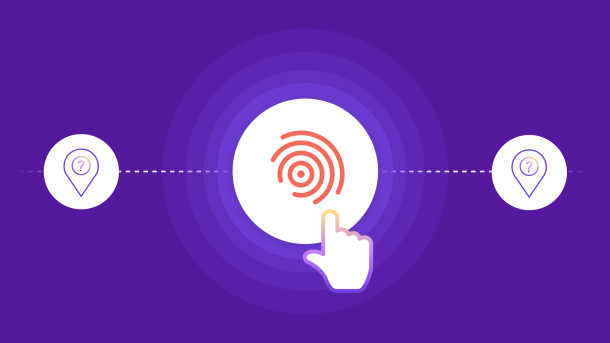Achieving consistent localization involves more than translating content. You also need to consider cultural nuances, not to mention balance your resources, budget, and time. Often, businesses turn to software localization services to help them scale, but not all services are equal.
We’ll show you how to choose the right software localization platform—plus, we’ll share reviews of six top-rated services that can lead to an increase in your market share and create exceptional experiences for your global customers.
3 essential components of software localization services
Unlike translation services, software localization services involve more than converting text from one language to another. Localized software needs to convey your intended message while maintaining accuracy pertaining to language, tone and messaging, the user interface, payments, date, time and number formats, and imagery.
Localizing software typically includes three primary tasks:
- Translation: Updating onboarding guides, help pages, and other content to your target location’s linguistic preferences
- Cultural adaptation: Ensuring that your software and mobile apps are functional and culturally appropriate by updating currencies, payment methods, and graphics
- Interface localization: Translating user interface (UI) elements like buttons, menus, and labels to improve user experience
6 popular software localization services
Considering software localization services? Here’s how six popular platforms compare:
1. Smartling
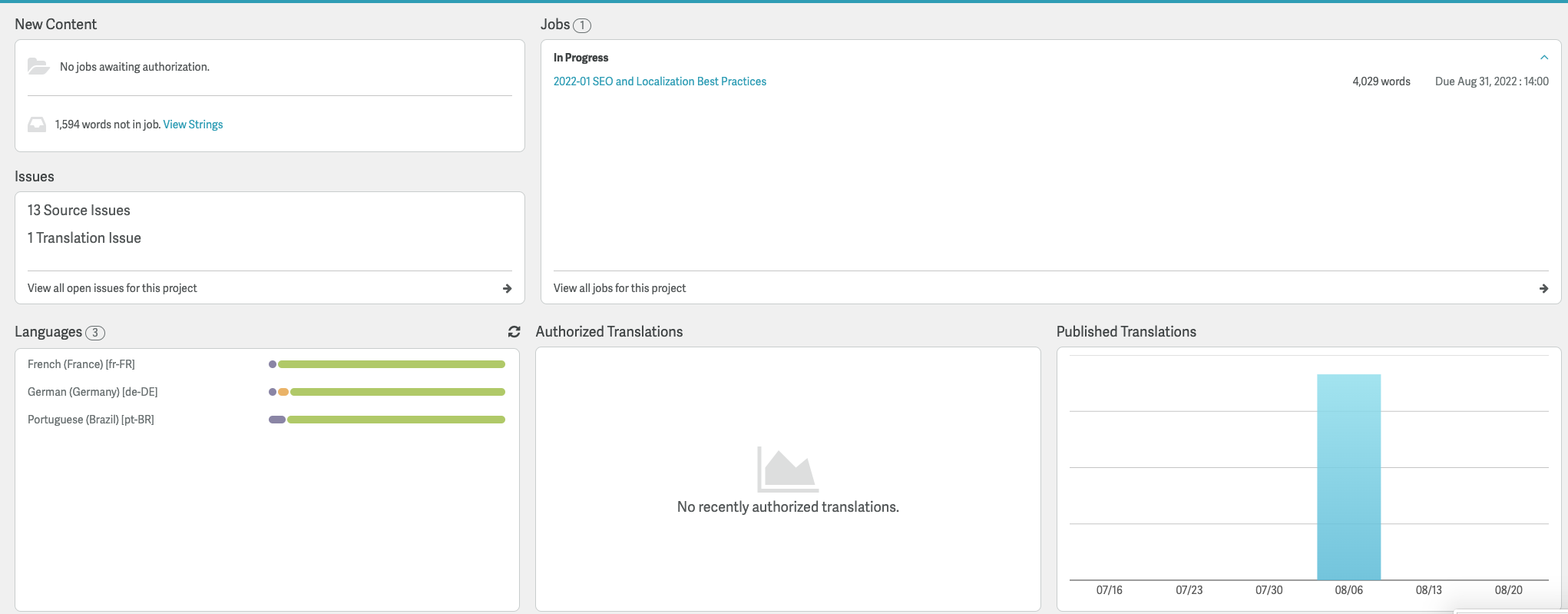
A cloud-based software localization service, Smartling also helps you track project progress and automate tasks. (Source: Smartling)
Smartling sets itself apart by offering end-to-end software localization services through its translation management system (TMS).
Along with linguists who are fluent in multiple languages and experienced in a variety of industries, Smartling offers multiple language services to assist with localization projects. These include video transcript, subtitle, and voiceover translation, localized SEO management, and localization testing to ensure that your localized product is consistent and functional.
Top features:
- Specialized language services: Professional linguists add a human touch to AI-generated translations and preserve quality, voice, and style, as well as target language nuances.
- Automated localization workflows: Automated translation workflows use AI to route content efficiently, which can speed up software development projects that require localization.
- AI translation: Large language model translation tools help reduce costs and improve speed while maintaining quality.
2. Smartcat
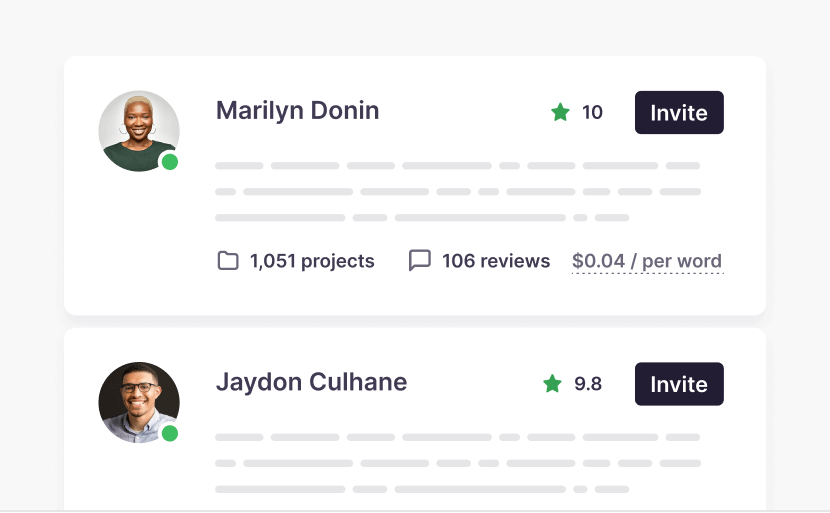
Smartcat’s linguist marketplace uses AI to pair you with the best translators and editors. (Source: Smartcat)
Smartcat is a cloud-based TMS that streamlines your localized software development process. It also includes a linguist marketplace where you can search for vetted translators, editors, and proofreaders for your software translation projects.
__Top features: __
- AI translation: Use Smartcat AI to translate text and review results.
- Collaborative TMS: Add team members and external stakeholders to ensure that everyone can view project progress.
- Integrations: Connect Smartcat to platforms like Figma, Google Sheets, Jira, and more.
3. Ulatus
Ulatus provides human translation and localization services in over 50 languages. (Source: Ulatus)
Ulatus provides software localization services for various industries, including niche categories like medical devices and life sciences. It also pairs you with native language speakers who have vetted academic or professional experience in your industry.
Top features:
- Audio and video localization: Transcription, voiceover, and subtitle localization ensure that all of your content reaches global audiences.
- Localization testing: Ulatus’ QA tool tests your software to spot and correct any text, layout, or functional errors.
- Pseudo-localization: Ulatus offers pseudo-localization that uncovers and corrects internationalization issues in your source code.
4. BLEND

BLEND offers both human- and AI-powered software localization services. (Source: BLEND Localization)
BLEND’s software localization services use human and AI translation to localize a variety of software elements, such as UI, training videos and guides, and more. Additionally, BLEND allows your team to manage projects on a single dashboard.
Top features:
- Streamlined project management: BLEND provides a single space where you can manage all of your localization project tasks, workflows, and stakeholders.
- Voice translation services: Voiceover, dub, and subtitle translations ensure full localization for all software-related content.
- Automated workflows: BLEND supports automated workflows, integrations, and custom API connections.
5. Localize Lab
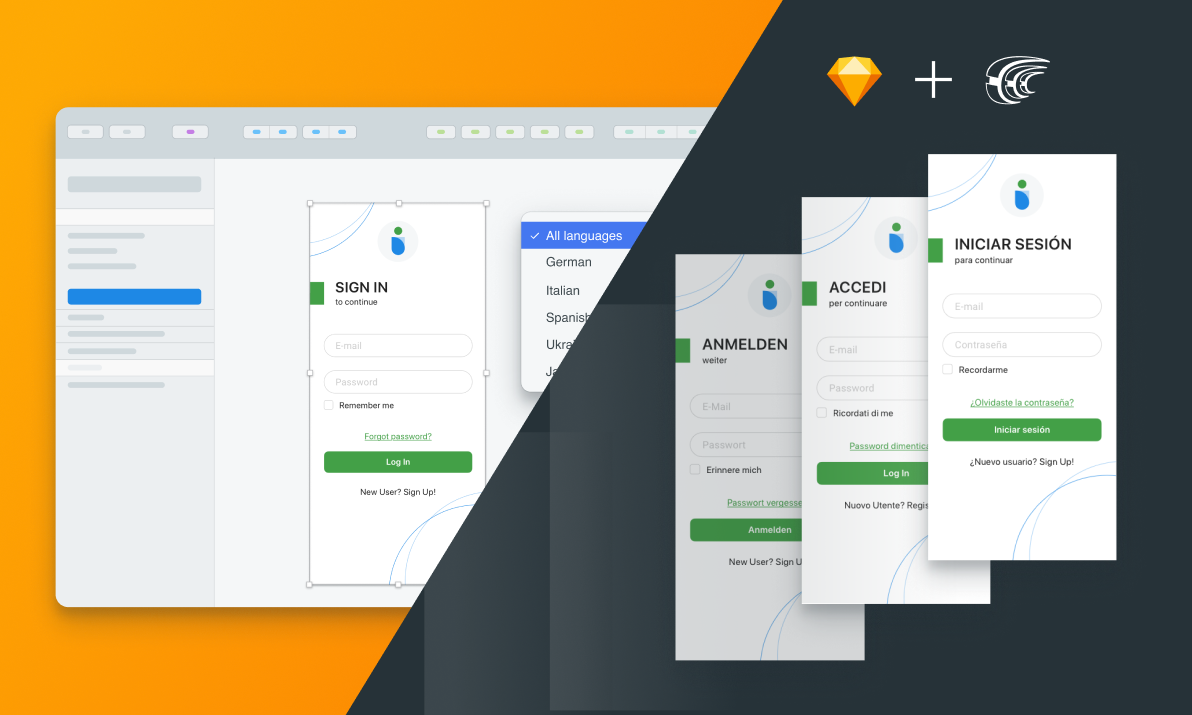 Localize Lab uses the translation management platform Crowdin to streamline localization for apps, games, and software. (Source: Localize Lab)
Localize Lab uses the translation management platform Crowdin to streamline localization for apps, games, and software. (Source: Localize Lab)
Localize Lab specializes in human translation for software and app localization projects but also uses machine learning to “learn” from past projects. It uses the Crowdin platform to provide localization project management tools.
Top features: -Continuous localization: Localize Lab uses API to automatically send updated files for translation, ensuring that your web apps and software are always ready for global markets.
- Third-party integrations: The service works with GitHub, Android Studio, Adobe XD, and more.
- Translation memory: This feature pulls from past localization projects to learn from and create consistent translations.
6. LILT
 LILT includes a localization project management dashboard that allows you to submit jobs for Verified Translation by both humans and AI. (Source: LILT)
LILT includes a localization project management dashboard that allows you to submit jobs for Verified Translation by both humans and AI. (Source: LILT)
LILT’s Contextual AI Engine aims to combine the best of both human and AI translation. Its AI adapts to your brand voice and style over time, while human translators ensure that outputs accommodate cultural differences.
Top features:
- AI- and human-powered translation: A combination of human linguists and AI technology ensures high-quality localized content.
- Contextual learning: The Contextual AI Engine uses existing data, along with translation suggestions, to fine-tune the software localization process.
- Workflow integrations: LILT integrates with existing workflows and tools like Webflow, Slack, Git, and more.
3 companies that mastered global markets
A majority of consumers (76%) prefer online content in their own language, which makes reaching global markets an uphill battle for many businesses. These three brands tackled global expansion with the help of Smartling’s software localization services to improve efficiency and time to market:
1. Mailgun and Mailjet
Localized email platforms Mailjet and Mailgun are part of Sinch, a communications platform that offers messaging, voice, and email solutions. Mailjet and Mailgun started with manual localization processes but needed a way to scale their localization efforts in new and existing markets.
This led Mailjet and Mailgun to choose Smartling, which sped up their time to market and improved localization return on investment with automated workflows and integrations. This partnership saved Mailgun and Mailjet a total of $180,000 and reduced the teams’ manual workload by over 2,500 hours.
2. Vimeo
Vimeo is a well-known video-sharing platform where more than 100 million global users upload, share, and view videos each month. However, the platform was once only available in English, which put Vimeo at risk of losing global customers.
Localizing its mobile app, website, video player, and marketing materials for Spanish, French, and German audiences was first on Vimeo’s agenda. But the manual localization process proved unsustainable.
To solve this, Vimeo partnered with Smartling to simplify and automate the localization process. This allowed Vimeo to launch in three new languages within a few months.
3. SurveyMonkey
Almost everyone who’s taken or shared an online survey knows of SurveyMonkey. Since almost a third of its millions of customers are in non-English speaking countries, the business sought an efficient way to localize its website and app for almost a dozen languages.
SurveyMonkey teamed up with Smartling to complete its first localization project in six weeks—and launched its content in a total of 10 languages in only six months. This success was thanks to an extensive pool of professional translators and Smartling’s Global Delivery Network (GDN)—which captures web app content, including dynamic JavaScript content.
How to choose the right localization partner
Look for these six qualities when deciding between software localization services to help you reach new markets:
1. Native speakers and industry experts
Ideally, your chosen software localization service has access to translators who are fluent in both the source language and your target language. Some software localization services specialize in specific regions, so double-check whether native speakers with firsthand knowledge of cultural nuances are available.
Similarly, if your software translation requires industry-specific expertise, look for a service that offers translators who have academic or professional experience. This experience will allow them to more accurately tailor your software localization to your target audience.
2. Automated workflows
Efficiency is a primary concern for many localization managers, and the ability to automate your workflow reduces manual tasks and streamlines communication. Automation also helps you scale more quickly and implement continuous localization to translate any new product updates.
Many Smartling customers automate 90–99% of their translation processes, which results in faster time to market.
3. Scalability
Ready to scale your software localization efforts? You need a provider that supports your operations with a centralized platform, integrations, and automation.
Ella Petlicka, internationalization senior program manager at Pinterest, shared best practices for managing large-scale localization projects at Smartling’s 2023 Global Ready Conference.
“Centralize your localization operations within one TMS platform,” says Petlicka. “Then, as much as possible, automate as well to make sure your processing time is shorter.”
Both your business and your localization service should focus on these three functions from the beginning. “It's easier to deal with those items at the beginning and more difficult to implement changes once your production is at full scale,” Petlicka added.
4. Quality assurance tools
Quality assurance (QA) is critical for localizing apps and software, so your localization platform must have QA tools ready. Otherwise, you may run into errors that require more time, resources, and budget to correct than you had anticipated.
For example, Smartling includes the following QA resources to ensure the quality of its localization services:
- 100% quality guarantee: Smartling guarantees that all translated content is on-brand and maintains a Multidimensional Quality Metrics score of 98 by running a monthly third-party audit and real-time, AI-powered quality checks.
- Predictive machine learning: Smartling uses AI to select the best machine translation engine to create the highest-quality and most accurate translations.
- Localization testing: Smartling runs tests to spot and correct bugs, errors, and visual and linguistic inconsistencies.
5. Continuous localization
As you push product updates, you need a localization partner that automatically pushes any new or updated software code and assets through for translation.
Smartling’s GDN crawler identifies new and updated content and then adds this content to Smartling for translation. This removes the need for you to manually create and approve content updates.
6. A combination of human and AI translation
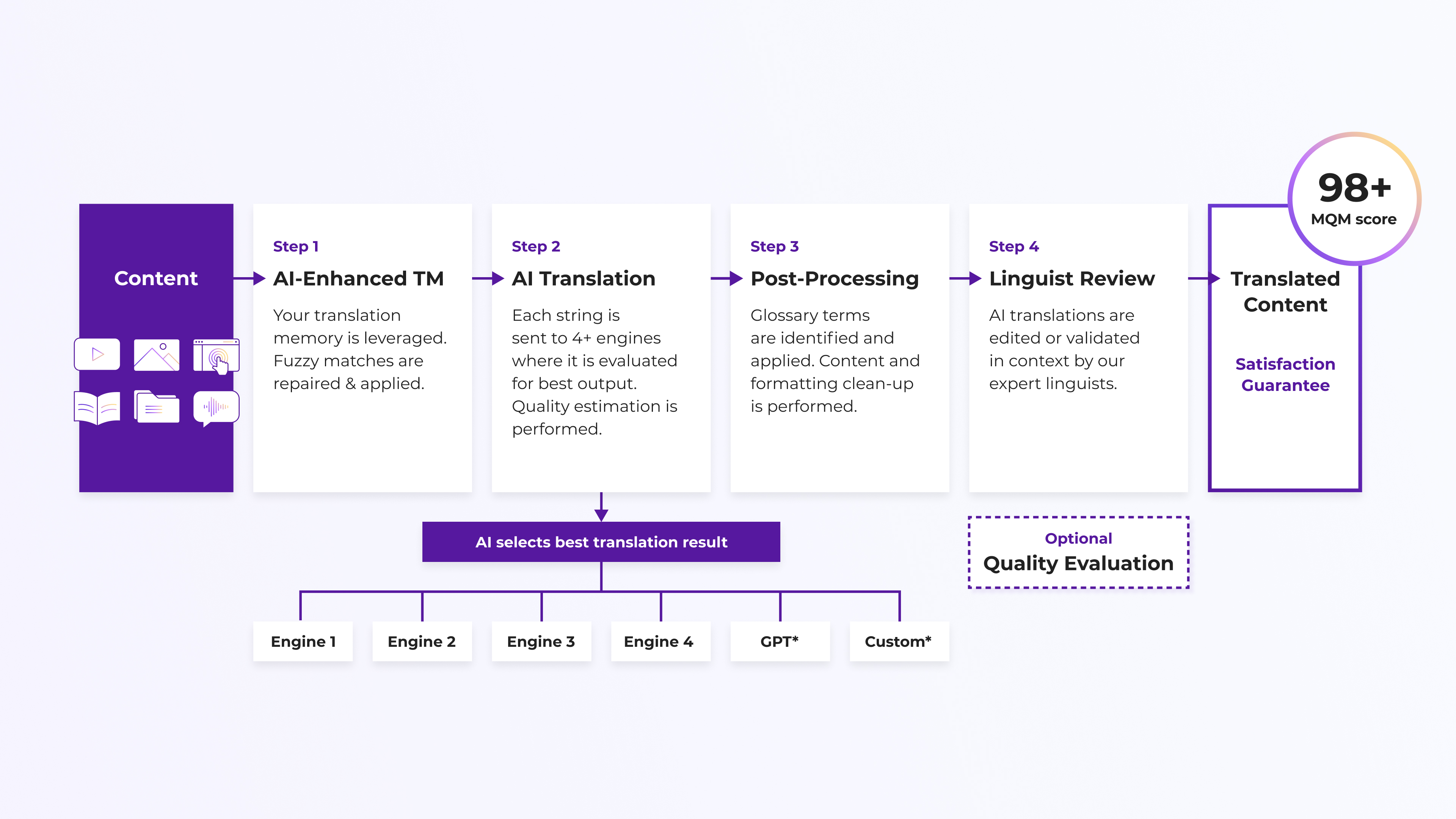
Smartling pairs expert linguists with AI to deliver the best of both approaches. (Source: Smartling)
Many localization services rely solely on human translators. This singular approach can impede localization processes and may also be time-consuming and costly.
A combined approach nets you the benefits of both human and AI translation. Smartling’s AI-Powered Human Translation uses AI to create initial translations. Then, expert linguists edit and customize the AI-generated results. This process results in high-quality localization at a lower cost and with a faster turnaround.
Streamline your software localization projects with Smartling
Smartling’s software localization services allow you to do more with less. We offer multiple tools that help you balance speed, accuracy, quality, and affordability in your localization process.
Watch our five-minute demo to see the centralized Smartling hub in action alongside our automated human and machine translation services and integrations.
If you’re ready to remove roadblocks and expand your market share, book a meeting with us to learn how our software localization services can help you scale your localization process.
